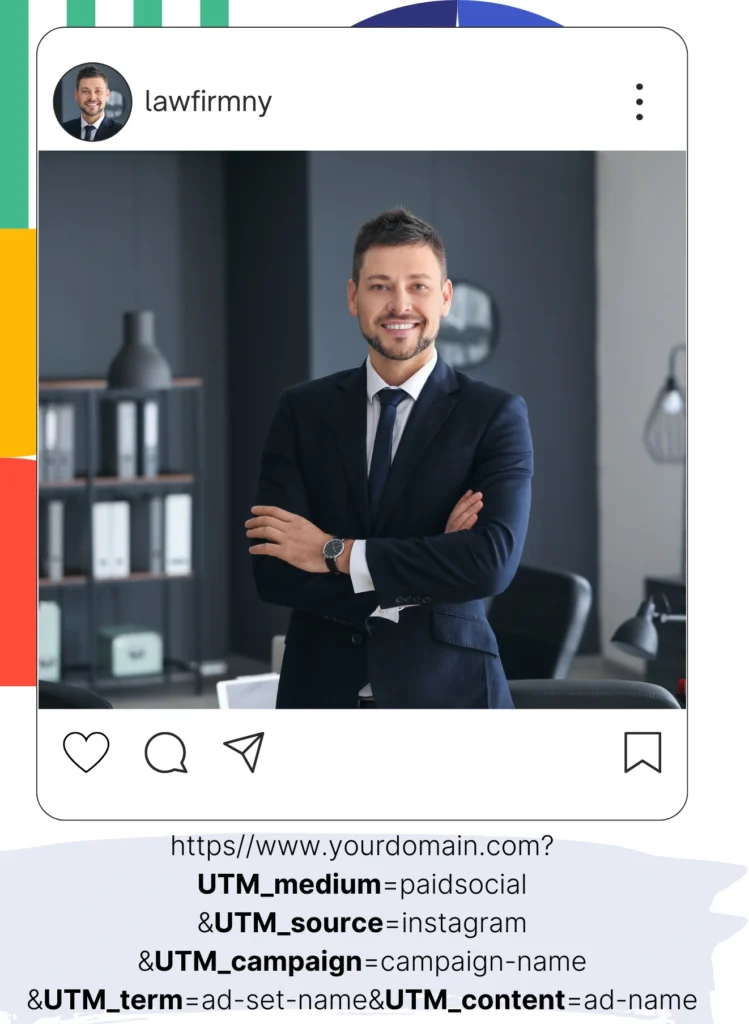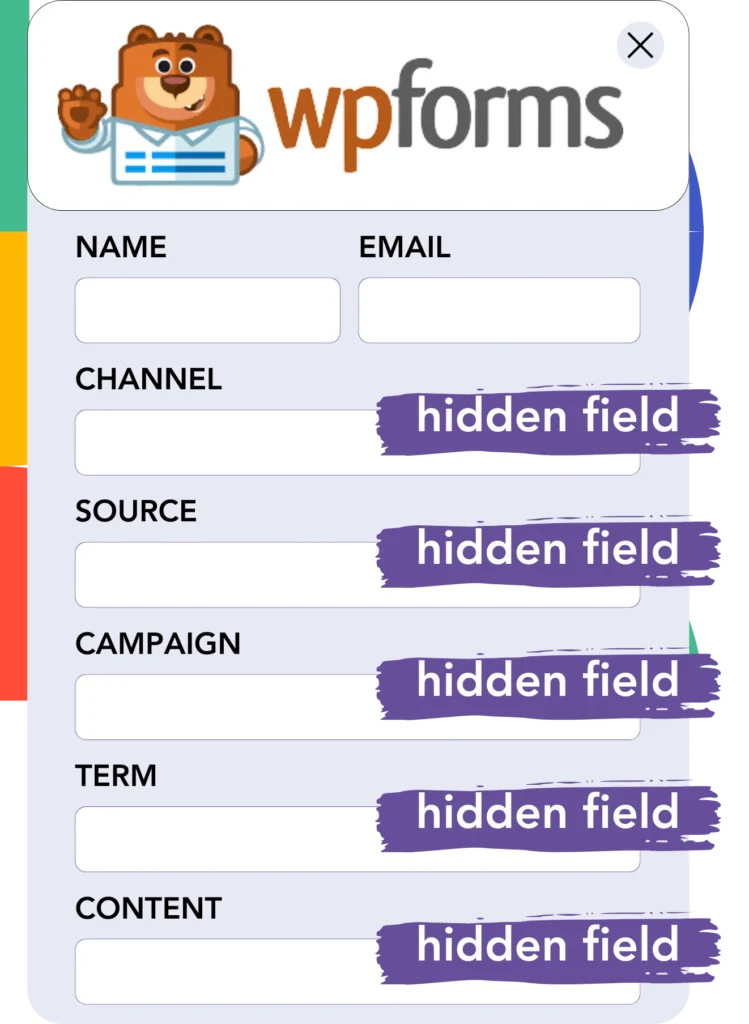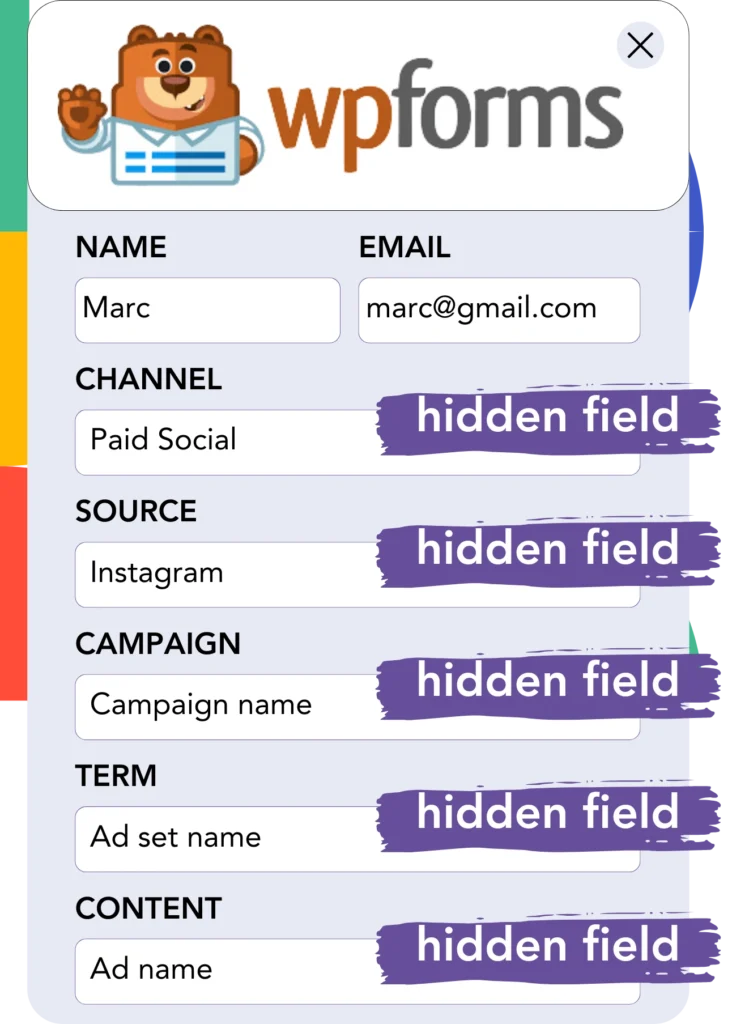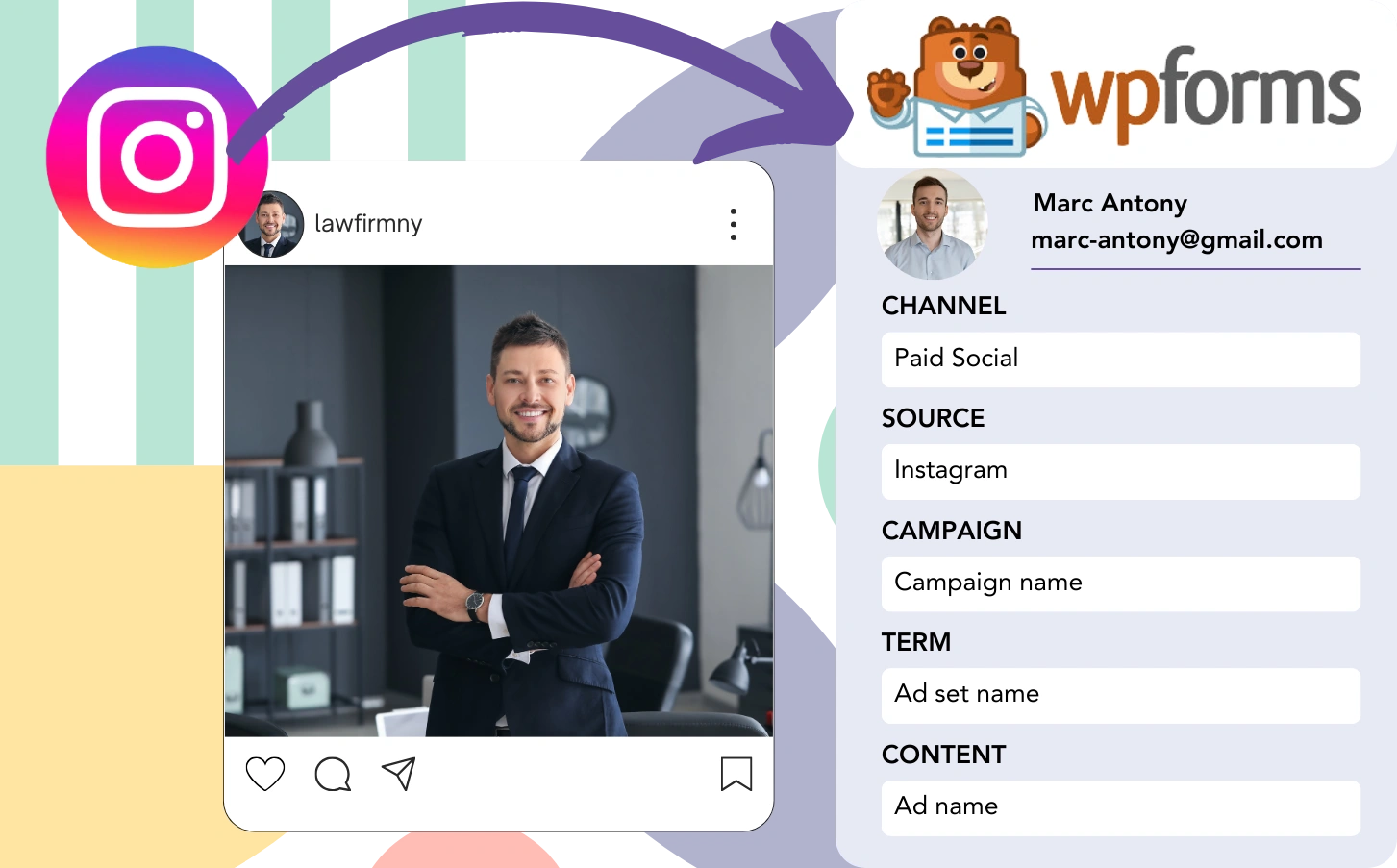You can capture Instagram leads using WPForms, although each lead can’t be associated with a specific Instagram ad. Similarly, when that lead becomes a customer, there’s no way to link them to the Instagram ad that generated them.
Without tracking, it’s difficult to assess your Instagram ads results, leaving you unsure about which ones drive leads and customers. Thus, you may be spending on ads that don’t deliver conversions.
A simple approach is available to connect each lead to the precise Instagram campaign, ad set, and ad that originated it.
Let’s go through each step together!
How to track Instagram ads in WPForms
Step 1: Add Leadsources in the head tag of your website

Leadsources is a user-friendly tool for identifying lead sources. When inserted on your website, you can track up to 7 key data points for each lead generated.
➡️ Sign up to Leadsources.io for free
➡️ Add the Leadsources tracking code to your site
Step 2: Add the UTM parameters to your Instagram ads

Add UTM parameters to your URL to track details like the Instagram campaign, ad set, and ad. Here’s a sample setup:
UTM_medium=paidsocialUTM_source=instagramUTM_campaign=campaign-nameUTM_term=ad-set-nameUTM_content=ad-name
The URL, once complete, should look as follows:
https://www.yourdomain.com?UTM_medium=paidsocial&UTM_source=instagram&UTM_campaign=campaign-name&UTM_term=ad-set-name&UTM_content=ad-nameImportant to note: Leadsources tracks lead sources comprehensively, even if UTM parameters aren’t included.
Step 3: Add the hidden fields in WPForms

Hidden fields are invisible form fields that store information, which is submitted along with the user’s form data.
When a user submits your WPForms, Leadsources automatically fills the hidden fields with data related to Instagram ads. Leadsources then stores this Instagram ad information in your WPForms.
Step 4: Capture the Instagram ads data in WPForms

When users click your ads and navigate to your site, Leadsources fetches the Instagram campaign, ad set, and ad-related data.
Leadsources effectively populates this Instagram ads information into the hidden fields of WPForms.
Hence, once the form is submitted, you can review the Instagram ad data and lead details in WPForms.
How does Leadsources work?
Whenever a visitor comes to your site, Leadsources fetches Instagram ad data and populates it in the hidden fields of your form. Upon form submission, this data, along with lead details like name and email, is sent to WPForms.
Leadsources tracks all of this source data for every lead:
| Lead source data | Fetched automatically |
| Channel | ✅ |
| Source | ✅ |
| Campaign | ✅ OR use UTM_campaign |
| Content | UTM_content parameter is required |
| Term | UTM_term parameter is required |
| Landing page | ✅ |
| Landing page subfolder | ✅ |
As seen in the table above, when UTM parameters cannot be implemented—like with organic sources such as Google search or referrals—Leadsources captures certain lead source data:
- Channel
- Source
- Campaign
- Landing page
- Landing page subfolder
Unlike various other tools, Leadsources keeps track of lead sources from all marketing channels, whether they are organic or paid.
Performance reports: Lead, sales, and revenue by source
By tracking Instagram ad data in WPForms, you can compile performance reports like:
- Leads, sales, and revenue by channel
- Leads, sales, and revenue by source
- Leads, sales, and revenue by campaign (aka. Instagram campaign)
- Leads, sales, and revenue by term (aka. Instagram ad set)
- Leads, sales, and revenue by content (aka. Instagram ad)
This provides you the opportunity to adapt your Instagram budget based on which campaigns, ad sets, and ads deliver the highest leads, sales, and revenue.
Let’s have a look at the selection of reports that you can compile:
1. Lead source reports
Prepare performance reports that highlight the number of leads obtained through:
- Channel
- Source
- Campaign (aka. Instagram campaign)
- Term (aka. Instagram ad set)
- Content (aka. Instagram ad)
- Landing page
- Landing page subfolder
Example #1: Leads by channel
This report reveals which channel is responsible for generating the highest quantity of leads.

Example #2: Leads by Instagram campaign
You can now target a particular lead source (e.g., Instagram) and analyze the leads generated by each Instagram campaign.

Example #3: Leads by Instagram ad
Once you discover the Instagram campaign that yields the most leads, you can evaluate which ad set or individual ad is responsible for this lead generation.

2. Sales and revenue source reports
Since we’ve determine the Instagram campaign, ad set, and ad that generate our leads, it’s important to check if these leads are converting into actual sales and revenue.
To meet this objective, integrate your leads with a CRM such as GoHighLevel. This allows the tracking of sales and revenue from different channels, sources, Instagram campaigns, ad sets, ads, landing pages, and landing page subfolders.
Using this data, you can improve your Instagram ad strategy to prioritize the channels, sources, campaigns, ad sets, and ads that bring in the most sales and revenue.
You are able to compile various sales and revenue reports, including:
- Sales and revenue by channel
- Sales and revenue by source
- Sales and revenue by campaign
- Sales and revenue by term (e.g., Instagram ad set)
- Sales and revenue by content (e.g., Instagram ad)
- Sales and revenue by landing page
- Sales and revenue by landing page subfolder
Example Scenario:
| Channel | Search Paid | Social Paid |
|---|---|---|
| Leads | 50 | 75 |
| Sales | 5 | 6 |
| Average Order Value | $150 | $100 |
| Revenue | $750 | $600 |
After implementing ads on Google and Instagram, the first “Leads by Channel” report highlighted that Social Paid ads (Instagram) attracted more leads than Search Paid ads.
However, upon investigating the sales and revenue metrics in your CRM, you found that the Search Paid channel brought in more revenue with fewer leads in comparison to the Social Paid channel. This guided you to adjust your budget to prioritize the Search Paid channel.
LeadSources tracks the source of each lead in WPForms, whether they come from ads, organic search, social, email, etc. and syncs that data with each submission. See the full breakdown on the lead source in WPForms page.

